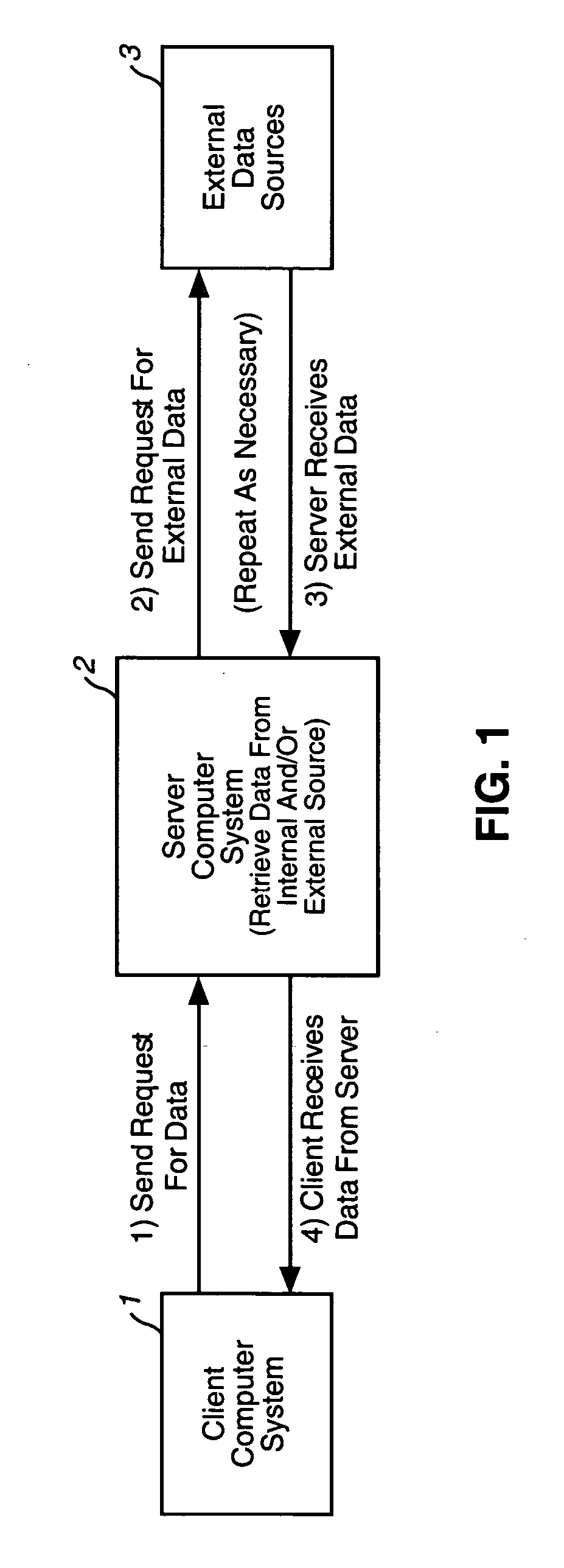Dynamic, hierarchical data exchange system
a data exchange and hierarchical technology, applied in the field of networked computer systems, can solve the problems of large size, large development and modification cost, and complex programming
- Summary
- Abstract
- Description
- Claims
- Application Information
AI Technical Summary
Benefits of technology
Problems solved by technology
Method used
Image
Examples
Embodiment Construction
of Authoring System, presents the graphical computer program layout of an authoring system.
[0034]FIG. 5, System Parameter File, is an example parameter file used by a preferred embodiment of the invention to dictate processing by the Authoring System and the Hierarchical Data Server (HDS).
[0035]FIG. 6, Hierarchical Data Server Process, is a flowchart describing the processing steps of the preferred embodiment.
[0036]FIG. 7, Process Element, is a flowchart describing the processing steps taken by the HDS to process an element.
[0037]FIG. 8, Process Children, is a flowchart describing the processing steps taken by the HDS to process the children element of an element.
[0038]FIG. 9, Format Memory into Data File, is a flowchart describing the processing steps taken by the HDS to format DDF elements after they have been executed.
[0039]FIG. 10, Output Element is a flowchart describing the processing steps taken by the HDS to format and output an element.
[0040]FIG. 11, SQL BuildSubtree,...
PUM
 Login to View More
Login to View More Abstract
Description
Claims
Application Information
 Login to View More
Login to View More - R&D
- Intellectual Property
- Life Sciences
- Materials
- Tech Scout
- Unparalleled Data Quality
- Higher Quality Content
- 60% Fewer Hallucinations
Browse by: Latest US Patents, China's latest patents, Technical Efficacy Thesaurus, Application Domain, Technology Topic, Popular Technical Reports.
© 2025 PatSnap. All rights reserved.Legal|Privacy policy|Modern Slavery Act Transparency Statement|Sitemap|About US| Contact US: help@patsnap.com



